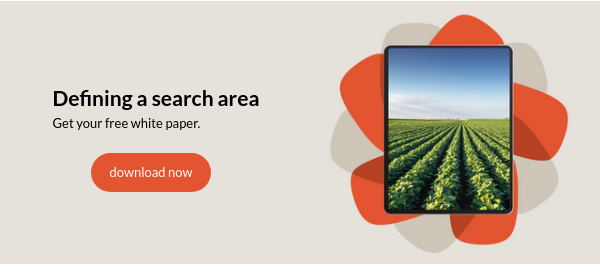5 things you should know about Smart Packaging
Smart Packaging links the physical world with the digital world: Smart packaging forms a perfect "digital bridge function" between manufacturers, retailers, consumers and social media channels. What is still often used to protect and label goods today will increasingly receive new functions in the future thanks to digital technologies. Packaging becomes more individual, personal and communicative.

What exactly is Smart Packaging?
In principle, "Smart Packaging" describes packaging with extended functions. There are usually two types of smart packaging - active packaging and intelligent packaging:
Active packaging
Active packaging is packaging that interacts with the contents and thus improves the shelf life or quality of the contents during storage. Either certain substances are released into the medium or certain substances are removed from the medium or its immediate surroundings.
This is achieved by using light filtering materials, oxygen and ethylene absorbers, antimicrobial surface coatings or moisture-regulating materials. The active component can be integrated into the packaging or added separately in the form of inserts.
A typical example is beer in a plastic bottle, which contains an oxygen absorber in the screw cap. This extends the shelf life from three to six months. Another example is film packaging with ethylene absorbers. The ripening hormone ethylene is absorbed during the storage of the food and thus ensures a longer shelf life.
Intelligent packaging
Intelligent packaging is packaging that offers an additional benefit that goes beyond the mere packaging task. The "intelligence" of packaging essentially results from "communication" with the outside world.
The additional benefit can include diagnostic and indicator functions that use indicators or sensors to monitor the condition of the product and provide information on e.g. tightness, storage time, temperature or freshness. Alternatively, the indicators or sensors can be integrated in the packaging, placed on the outside or inside the packaging.
Thanks to these integrated freshness and/or time/temperature indicators, retailers and consumers can see whether a critical limit value has been exceeded. For example, a colour change in the packaging indicates an interruption in the cold chain, a leaky packaging or an unwanted proliferation of salmonella.
In addition, intelligent packaging also fulfil information, automation, marketing or protective functions, e.g. through barcodes, LEDs, augmented reality, NFC, loudspeakers, radio chips or displays. One example is intelligent drug packaging with built-in RFID chips, LEDs and tiny loudspeakers that register the removal of pills and sound an alarm if they are taken incorrectly or even inform the doctor treating the patient. The same applies to packaging with NFC chips, which, using an NFC reader (e.g. smartphone), make it possible to read out the package insert and reorder the medication.
Extended packaging offers smartphone users additional product information on origin, production conditions or ingredients. By scanning barcodes or RFID chips, the information can be called up in conjunction with a suitable app on the Internet.
At the same time, this technology can of course also be used for logistics and marketing purposes. For example, the Johnnie Walker Blue Label bottle uses extremely thin electronic sensors that transmit when the bottle has been opened or where it is in the distribution chain. In addition, Diageo can upload promotional offers while the bottle is in the store. However, as soon as the sensor indicates that the bottle has been opened, the information is exchanged with cocktail recipes.
Packaging equipped with augmented reality elements goes one step further. This often refers to visualizations that virtually supplement real images on a smartphone or tablet. The application possibilities are manifold. Virtual tours, competitions, virtual theme worlds or operating instructions that appear on the packaging when photographing or filming a product have already been realised.
The British company Novalia, for example, already prints keyboards on a special paper containing a Bluetooth chip. A practical application for this was realized in a brochure for an Audi TT. The brochure "communicates" with the smartphone and thus provides a realistic impression of the cockpit:
Using similar techniques, Novalia already plays music on posters or transforms vinyl albums into DJ consoles so that buyers can already listen to the music through the cover. Practical applications in logistics would be "talking" packages or pallets that provide information on transport and storage.
Smart Packaging is a growth market
Smart Packaging is still at the beginning of its development, but its potential is immense. Although the technology for smart packaging is already available in many areas, its mass application has so far failed due to the high production costs.
Researchers at the Fraunhofer Institute for Modular Solid-state Technologies (EMFT), for example, are currently working on a more efficient production process that develops sensory labels consisting of flexible silicon chips and modern films, in which both elements are brought together by a rational roll-to-roll process.
According to a study by the Organic Electronics Association, printable electronics should be ready by 2021 to offer cost-effective production for mass production. Analysts at market research company IDTechEx estimate that global sales of printed electronics packaging will increase from currently 75 million US dollars to 1.45 billion US dollars by 2023. Analysts at MarektsandMarkets expect sales of 40 billion US dollars for all forms of smart packaging in 2020.
The DIN Institute, which is already working on a draft for printed electronics in accordance with ÖVE/ÖNORM EN 62899-1, is also following this development. On an international level, too, specialists are developing standardisations within the framework of IEC so that nothing stands in the way of the introduction of printable electronics on the mass market in the medium term.
Logistics as an innovation driver
The innovative presentation and distribution channels through smart packaging have led to a comprehensive re-evaluation of the entire logistics chain in the packaging industry. On the one hand, intelligent packaging increases digitalisation printing in the transport sector, but on the other hand it creates new interaction possibilities that also serve logistics. Trend researchers such as Peter Wippermann, however, do not expect too much intelligent packaging on the shelves in the near future and attribute a pioneering role to logistics as the incubator of smart packaging:
Ultimately, Smart Packaging can be seen as a building block on the way to industry 4.0 in the packaging industry. The complete tracking of the transport route in real time (track & trace) is already part of the repertoire of digital applications in logistics today. In the future, RFID chips and similar innovative technologies will extend the possibilities of smart packaging to the level of individual goods."Smart packaging will not be the result of marketing, but the result of automated logistics processes on the Internet of Things," says Wippermann.
Smart Packaging from the consumer's point of view
The development of innovations in the field of smart packaging will in future open up a wide range of opportunities to reach consumers and understand their needs. But what about the willingness of consumers to use these technologies?
Experts agree in principle that the consumer's need for information will continue to increase and that "communicating" packaging will be well received by consumers. This is also confirmed by the Mindshare study "Everyday Connects": The willingness to use smart packaging is very high - but under the premise of simple and fast interaction. Smartphones are the best way to do this, but without installing an app in advance.
Even better are smart packagings, which get along completely without additional equipment, thus also without Smartphone. Saralon, a company based in Chemnitz, Germany, has developed functional inks that, in combination with other electrical components, enable printed batteries, displays and sensors directly on the packaging. This also eliminates the entire IT infrastructure required for readout. Smart packaging of this type is therefore less vulnerable, simpler and therefore also cheaper.
The question of disposal
According to experts, the issue of the disposal of smart packaging is still insufficiently regulated and therefore still represents a certain hurdle. After all, packaging with electronic elements must be evaluated as electronic devices. Due to their independent electronic function, they would fall under the Electrical and Electronic Equipment Act. Since this is to be classified higher than the packaging regulations, disposal via household waste is problematic. Manufacturers would therefore have to make special markings.
Conclusion: Smart packaging as a means to an end
The digital transformation has also captured the packaging. However, the use of smart packaging should not be primarily oriented towards trends and image cultivation, but should focus on the benefits for the company itself and the customer. The potential and added value of innovative packaging should be profitable for consumers, manufacturers and retailers alike.











